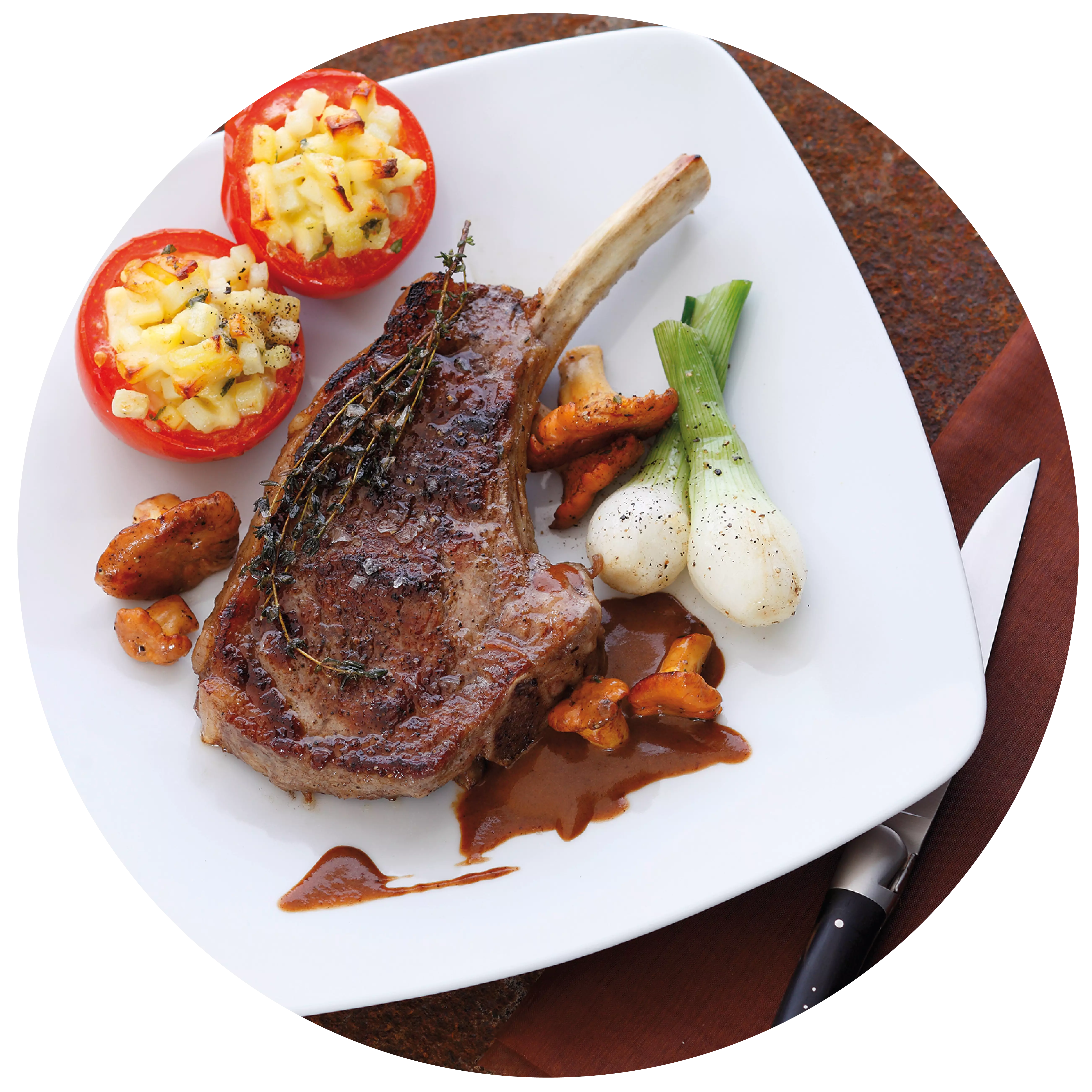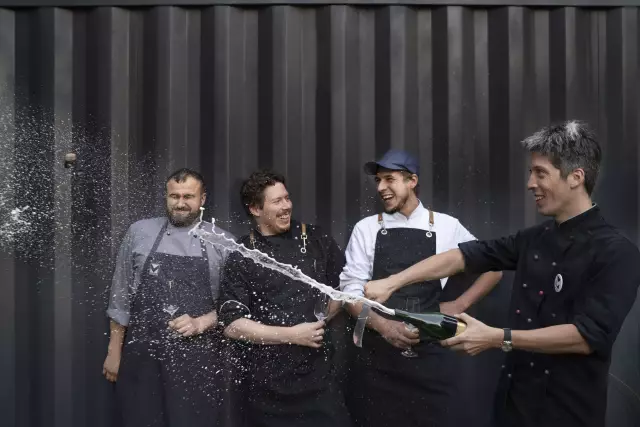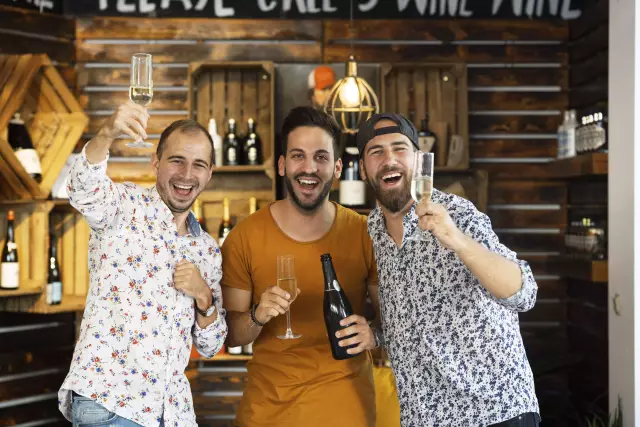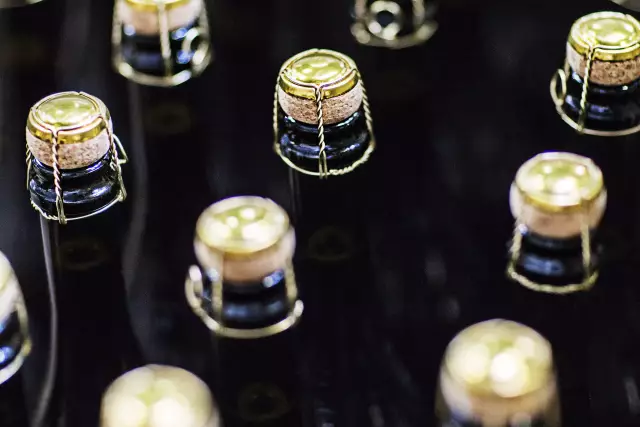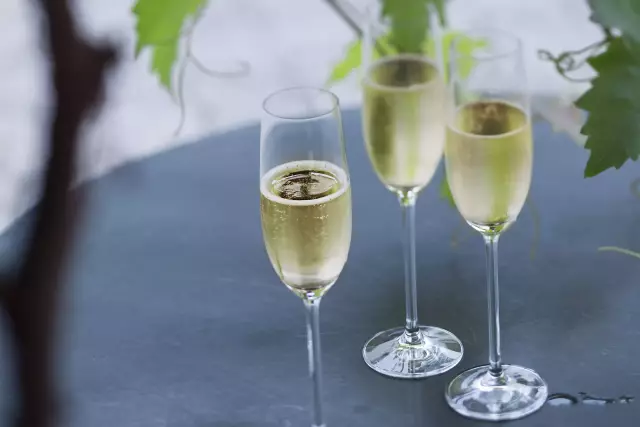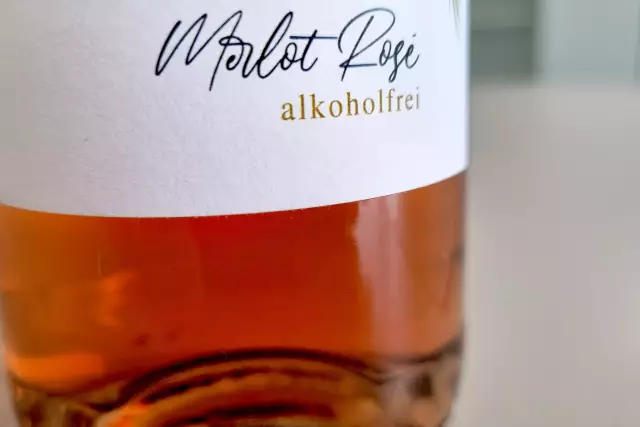Sparkling wine
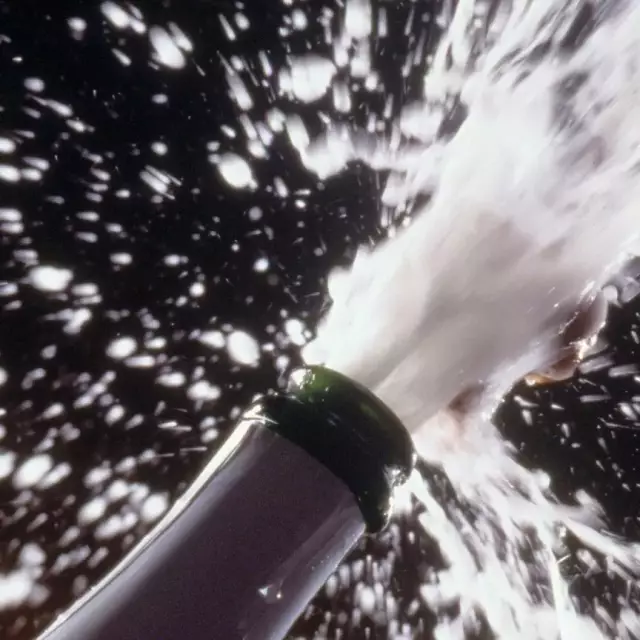
Be it New Year’s Eve, a party or brunch, a Formula One or a horse race – whenever people are bubbling over with joy, it’s hard to imagine them without a glass of bubbly, the sparkling crown jewel of winemaking.
Facts
-
8 - 10°
are ideal drinking temperatures
-
3,5
bar minimum
-
9 Monate
Fermentation in the bottle
-
0-3g
residual sugar content correspond to "brut nature".
German gourmets are the world champions of Sekt consumption. And that’s why many wine estates have established Winzersekt as a fixed component on their list of offers.
Extra Effort brings Extra Flavor
Classic fermentation in the bottle: At the beginning of the production of Sekt, sugar and a special kind of yeast, able to withstand great pressure, are added to the base wine. This initiates the second fermentation, producing the CO2 that will later make the Sekt sparkle so pleasantly in the glass. The pressure exerted by the carbonic acid needs to amount to at least 3.5 bar – up to 6 bar can be achieved. In the original method of Sekt manufacturing, the so-called Méthode champenoise, and in classic bottle fermentation, the second fermentation takes place in the individual bottle.
In a dark and cool cellar, Winzersekt lies and matures on its yeast for a minimum of 9 months, sometimes for years. After this, the bottles are placed upside down into so-called riddling racks. For a period of four weeks, they get turned daily and set ever more steeply upright at the same time. At the end of this laborious process, all the yeast has collected in the bottle’s neck. The bottle necks are then immersed in a brine (a freezing cold solution) to make the yeast freeze. If the bottles are opened now, the pressure from the carbonic acid ejects the yeast clot. The technical term for this process is “disgorging”.
Since the term “Méthode champenoise” has been exclusively reserved to the products of the French Champagne region for many years, Sekt manufactured by this method in Germany uses the term traditional or classic bottle fermentation.
Designations of styles
The designations for the styles of Sekt as defined by German Wine Law are different from those of wine, because the natural carbonic acid content of Sekt reduces the perception of sweetness. Accordingly, the permissible residual sugar levels of a dry Sekt are markedly higher than those of a dry wine.
- brut nature: 0-3 g/l
- extra brut: 0-6 g/l
- brut: 0-12 g/l
- extra dry: 12-17 g/l
- dry: 17-32 g/l
- semi-dry: 32-50 g/l
- mild: over 50 g/l
Not everything that foams is sparkling wine:
Schaumwein is the generic term for moussing, i.e. foaming wines with perlage, with a minimum pressure of 3 bar.
Sparkling wine is sparkling wine whose carbonic acid is produced during fermentation and generates at least 3.5 bar of internal pressure.
Perlwein has less pressure, the carbonic acid may also be added. Good sparkling wines are fresh, light, summery-fruity and at the same time relatively inexpensive, as they are not subject to sparkling wine tax.
Secco is the modern term for trendy sparkling wines.
Crémant can be called German sparkling wines that meet certain specifications for grape varieties, harvest and fermentation.
Which wine-growing region was the first to introduce sparkling wines to the market?
Rheinhessen launched the first vintner sparkling wines in Germany more than 25 years ago.
Varietals

the "Frankfurt Green Sauce" Quiche with herbs
the "Frankfurt Green Sauce"
- 200 Gramm Mehl
- 100 Gramm Butter
- je 1 Bund Kräuter für Frankfurter Grüne Sauce (Petersilie, Kresse, Kerbel, Borretsch, Sauerampfer, Schnittlauch, Pimpernelle)
- 100 - 125 Gramm Schwarzwälder Schinken
- 7 ganze Eier
- 125 ml Sahne
- 100 Gramm Frischkäse
- 1 EL Zitronensaft
- nach Geschmack Salz & Pfeffer
Knead the flour and butter with 4 tbsp water and a teaspoon of salt to form a smooth dough. Line a mould with it and leave to cool for 30 minutes.</p
<p>Hard boil 4 eggs. Wash, drain and finely chop the herbs from the Frankfurt green sauce. Cut the ham into wafer-thin slices and spread on the pastry base. Chop the hard-boiled eggs into small
and spread over the top. Mix the 3 eggs, cream and fresh cheese and season with 1 tbsp lemon juice, salt and pepper, then fold in the herbs. Spread the mixture over the pastry base.
Bake at 180 °C (gas mark 4) on the middle shelf of the oven for about 30 minutes.
- Riesling (trocken)
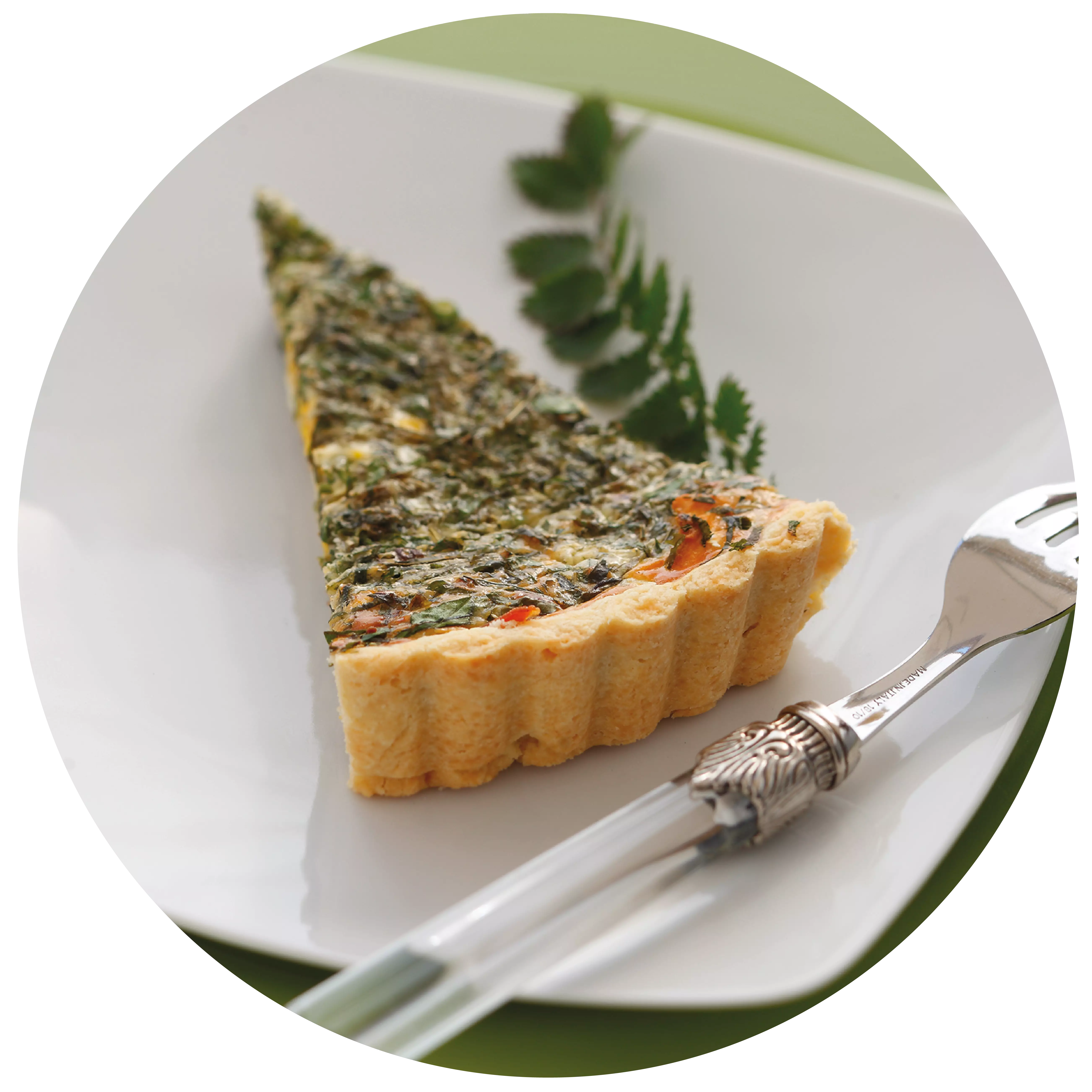
with apples Pork medallions
with apples
- 8 Stück Schweinemedaillons
- 500 Gramm Bandnudeln
- 2 große Äpfel
- 200 ml Sahne
- 10 Blättchen frischer Salbei
- 4 Zweige frischer Thymian
- nach Geschmack Zucker
- 3 EL Calvados
- 1 EL Öl
- zum Abschmecken Salz & Pfeffer
Slightly pepper and salt the medallions on both sides. Pluck the thyme, cut the sage into fine strips and roll the medallions in the herbs. Fry the meat in a pan with a little oil on both sides, not too hot, until it starts to colour. Remove from the pan and place on a preheated tray in the oven at 100 °C until cooked through.
Cook the tagliatelle al dente and keep warm.
In the meantime, peel the apples and cut into slices approx. 1.5 cm wide. Reheat the meat pan and add the apple slices. After about half a minute, sprinkle 1 teaspoon of sugar over the apples and allow them to caramelise. After a minute, deglaze the apple slices with a generous dash of Calvados and flambé. Add the cream and flavour with salt and pepper.
Remove the fillet from the oven. Add the meat juices from the oven dish to the sauce and serve the fillets with the tagliatelle, apple slices and Calvados apple sauce.
<p- Riesling (trocken)
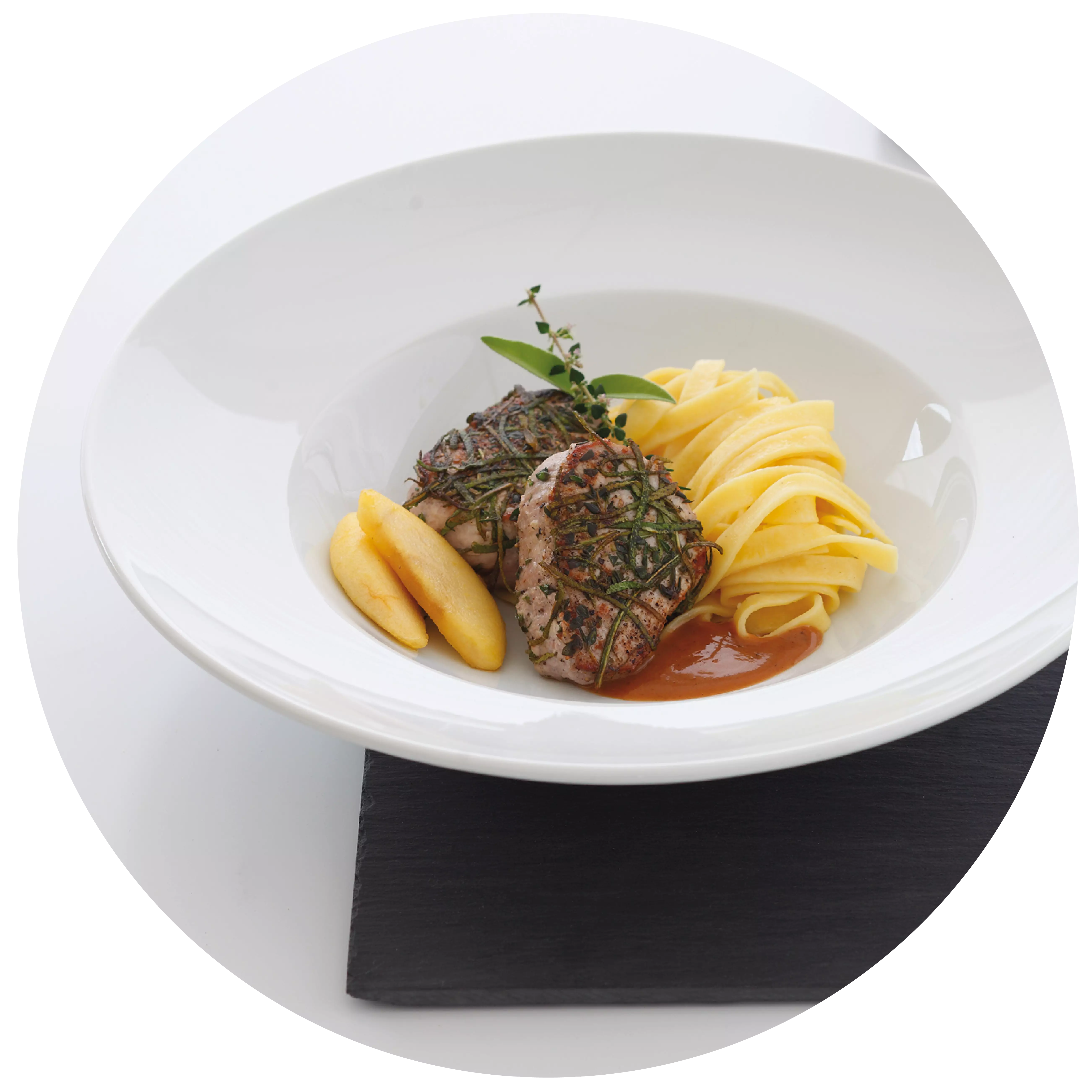
with herb crust Roast turkey
with herb crust
- 600 Gramm Putenbrust am Stücke
- 0,25 Liter Weißwein
- 0,25 Liter Gemüsebrühe
- 4 ganze Tomaten
- 4 Scheiben Toastbrot
- 2 ganze Eier
- 2 Stück Zwiebeln
- 75 Gramm geriebener Emmentaler
- 1 Stange Porree
- 1 Bund Schnittlauch
- 1 EL Olivenöl
- nach Belieben Salz & Pfeffer
Wash the meat, pat dry and cut a deep pocket lengthways. Crumble the toast. Wash and chop the herbs, peel and dice the onions.
<p
<p>Preheat the oven to 200°C (top and bottom heat). Place the bread, herbs, onions, cheese and eggs in a bowl, mix thoroughly and season. Stuff 2/3 of this mixture into the turkey breast. Pin the opening with wooden skewers and tie up crosswise with kitchen twine. Place the roast in a roasting tin and brush with oil.
Roast in the preheated oven for approx. 1 hour. Gradually pour in the white wine and vegetable stock.
<p
<p>Clean and wash the vegetables. Cut the leek into pieces and add to the roast with the whole tomatoes after 30 minutes.
About 20 minutes before the end of the cooking time, spread the remaining third of the herb mixture over the roast and finish cooking.
Arrange on plates with the vegetables and serve. Serve with rice.
- Pinot Gris (trocken)
- Chardonnay (trocken)
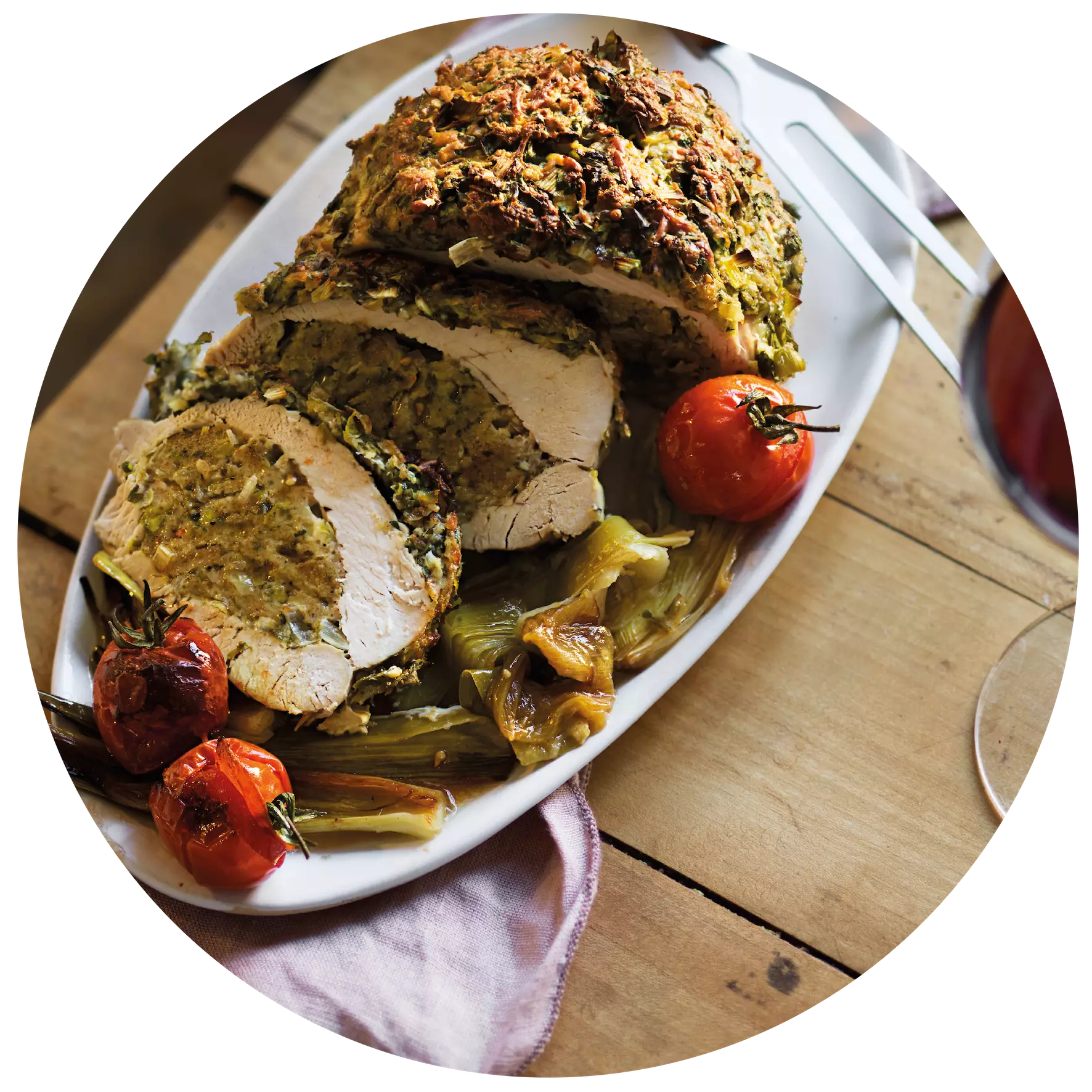
with chanterelle and onion leek, served with potato and grilled cheese ragout in grilled tomato Chop of Hunsrück veal
with chanterelle and onion leek, served with potato and grilled cheese ragout in grilled tomato
- 4 x 300 Gramm Kotelettes
- 250 Gramm Pfifferlinge
- 4 große Kartoffeln
- 2 große Grilltomaten
- 180 Gramm Flammkäse
- 50 Gramm Knollensellerie
- 200 ml Spätburgunder
- 200 ml Sahne
- 50 Gramm Butterschmalz
- 2 EL Butter
- 1 EL Rapsöl
- 6 Stück Lauchzwiebeln
- 1 kleine Knoblauchzehe
- je 1 Zweig Thymian & Rosmarin
- je 1 TL Majoran & Oregano
- nach Belieben Salz & Pfeffer
Peel the potatoes, celery and garlic clove, crush the garlic and cut the potatoes and celery into small cubes. Heat the rapeseed oil in a pan, add the potato and celery cubes, sauté briefly and top up with ⅔ of the cream. Season with salt, pepper and the crushed garlic and leave to simmer for approx. 6 minutes. Add the oregano, marjoram,
add a little thyme and the diced flambé cheese and remove from the oven immediately.
Season the veal chops with pepper, fry in the pan in hot clarified butter for approx. 3 to 4 minutes on both sides and then cook in the oven at 160 degrees for 8 to 9 minutes. Then leave the meat to rest briefly.
Cut the grilled tomatoes in half, remove the skin, place on a baking tray and fill with the potato and flambé ragout. Place the baking tray in the oven with the chops for approx. 6 - 7 minutes. Add 1 tbsp of butter and the sprig of rosemary to the roasting mixture, deglaze with the Pinot Noir, reduce a little and refine with the remaining cream. Season to taste with salt and pepper.
Clean the chanterelles and spring onions. Wash the spring onions well, cut into 5 cm pieces, blanch briefly in salted water and rinse in ice water. Heat 1 tbsp butter in a pan, add the chanterelles and sauté for 2 - 3 minutes. Add the spring onions and the rest of the thyme and season with salt and pepper.
<p- Riesling (trocken)
